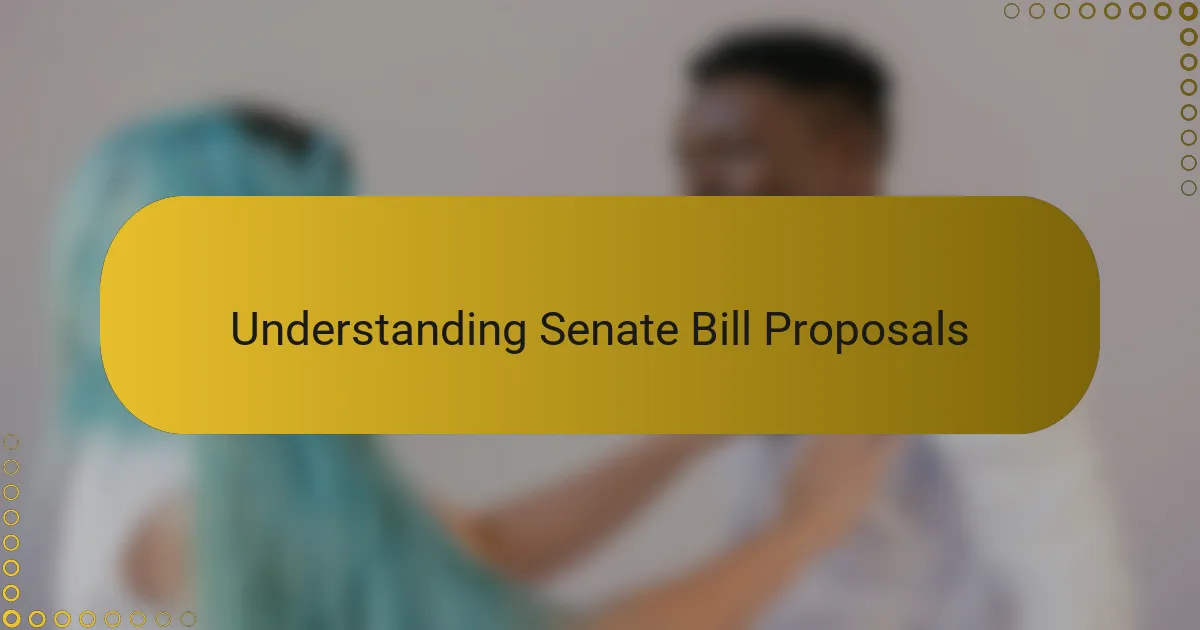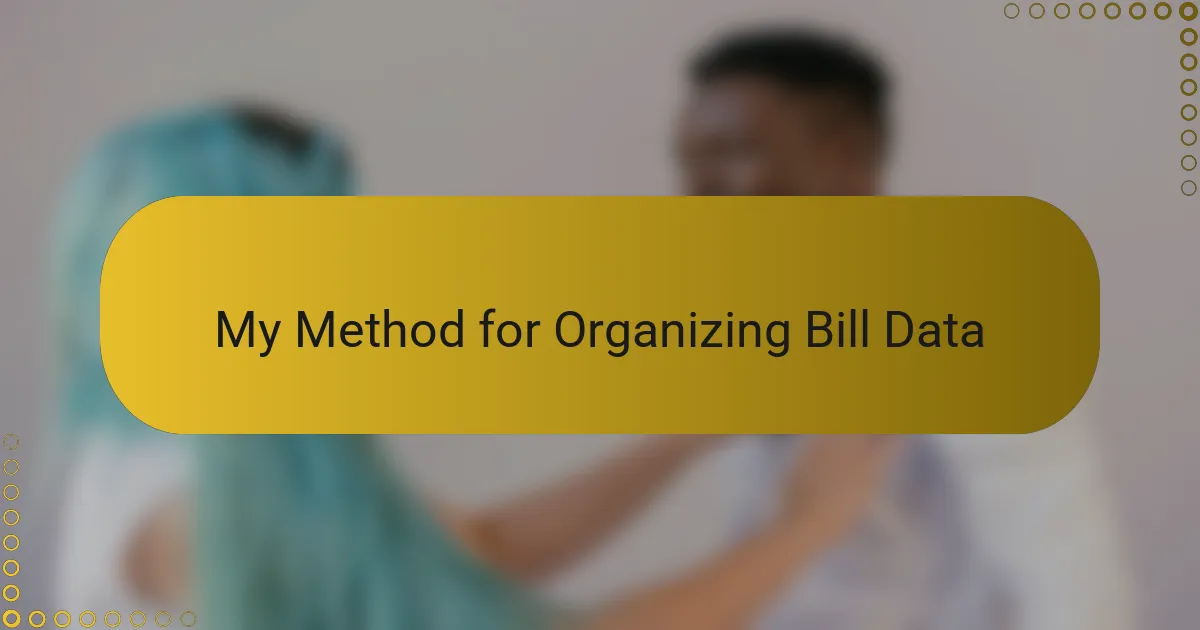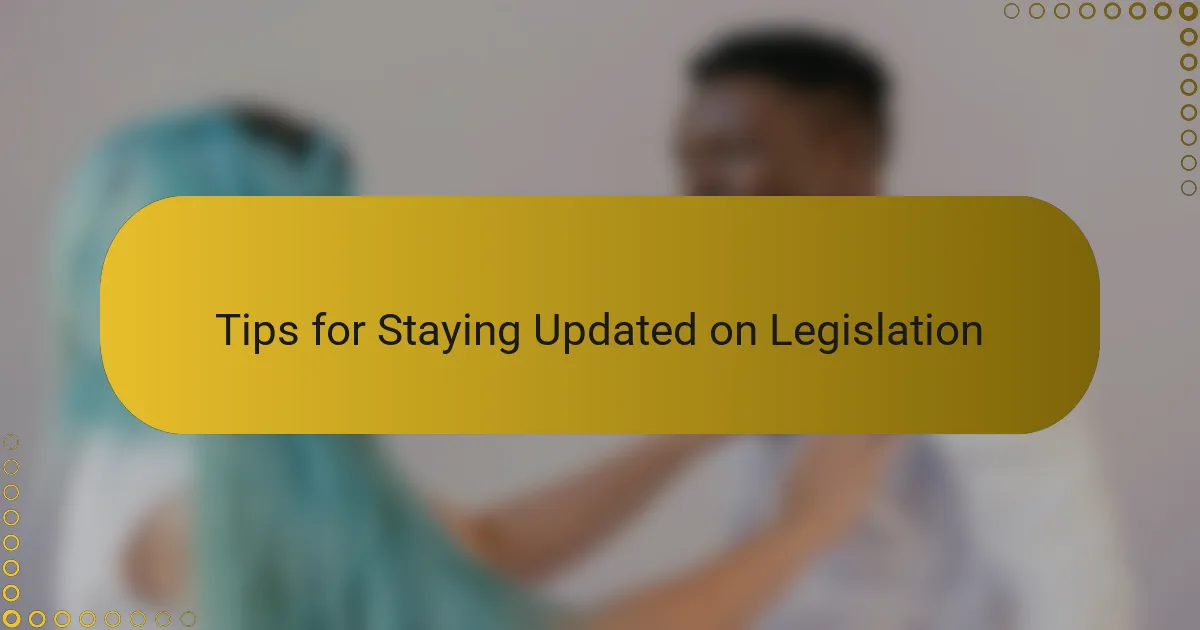Key takeaways
- Understanding the legislative process is crucial for tracking Senate bills, as proposals go through various stages that reveal their impact on national values and priorities.
- Utilizing tools like Congress.gov and GovTrack enhances the bill tracking experience by providing real-time updates and customizable alerts tailored to specific interests.
- Organizing bill data effectively can reveal trends and make the tracking process manageable, turning complex information into actionable insights.
- Establishing a routine for checking updates, reducing alert noise, and engaging with communities can significantly improve the experience of staying informed on legislation.

Understanding Senate Bill Proposals
When I first started tracking Senate bill proposals, I quickly realized how complex they can be. Each bill is essentially a formal idea put forward for debate, but the language often feels dense and loaded with political jargon. Have you ever tried reading one and wondered, “What does this really mean for me or the country?”
Bills in the Senate go through multiple stages—introduction, committee reviews, debates, and votes. Understanding these steps helped me see where and how a proposal can change or even stall completely. It’s like following a story that evolves in real time, with unexpected twists that keep me hooked.
What struck me most is how these proposals reflect the values and priorities of our leaders at specific moments. Tracking them isn’t just about politics; it’s about seeing how the nation’s future is being shaped, one bill at a time. That realization made me more invested in the process than I ever expected.
![]()
Tools for Tracking Senate Bills
When I first dove into tracking Senate bills, I quickly found that relying solely on official websites felt like searching for a needle in a haystack. That’s when I started using tools like Congress.gov and GovTrack. These platforms provide real-time updates and detailed summaries, making the maze of legislative activity much easier to navigate.
What really surprised me was how customizable some of these tools are. For example, using alerts on GovTrack allowed me to receive notifications about bills I care about without constantly refreshing pages. It made the whole process feel more manageable, almost like having a personal assistant for politics.
Have you ever wondered how reporters stay on top of hundreds of bills? I realized it’s tools like LegiScan and BillTrack50 that give them the edge. Their advanced search filters and tracking features enabled me to follow specific topics and see the status changes immediately—turning what seemed like a complex chore into something almost enjoyable.
![]()
Key Features of Bill Tracking Systems
One feature I found indispensable in bill tracking systems is real-time updates. Imagine trying to keep up without knowing the exact moment a bill advances or stalls—it’s like chasing a moving train in the dark. These instant notifications gave me a sense of control, making the legislative process feel less overwhelming and more dynamic.
Another aspect that really stood out to me was the ability to filter and search deeply within the system. I remember spending hours just skimming through endless bill titles before discovering how filters let me focus on specific topics or sponsors. This saved me so much time and kept me laser-focused on the proposals that truly mattered.
Lastly, I appreciate when these systems offer clear summaries and status codes that translate political jargon into plain language. Have you ever stared at a bill’s text and felt completely lost? Trust me, those simplified explanations are a game-changer, turning tricky legalese into something I can discuss confidently with friends or on my podcast.

Setting Up Personalized Bill Alerts
Setting up personalized bill alerts was a total game-changer for me. At first, I was overwhelmed by the sheer volume of proposals, but once I tailored alerts to specific topics and senators, I felt like I finally had a handle on the chaos. Have you ever wished you had a political radar tuned exactly to your interests? That’s exactly what these alerts do—I get notified the moment a bill relevant to me pops up or changes.
I remember the relief of not having to constantly check websites, endlessly refreshing pages, wondering if something new had happened. Instead, the alerts came straight to my inbox or phone, almost like a nudge from a knowledgeable friend reminding me, “Hey, this just happened.” It made staying informed feel effortless—and kept me engaged in a way I hadn’t expected.
The best part? Most platforms let you decide how detailed or broad your alerts are. I started with general topics but soon found value in following bills tied to local issues or lawmakers I respect. This personalization turned my tracking from a tedious chore into an ongoing conversation with the political process. Have you tried setting up alerts yet? If not, I’d highly recommend it—you’ll wonder how you ever followed bills without them.

My Method for Organizing Bill Data
Organizing bill data for me became more than just stacking documents—it was about creating a system that feels intuitive and reveals patterns over time. I designed spreadsheets that break down each bill by sponsor, status, and key issues, which helped me spot trends I might have missed scanning individual proposals. Have you ever found yourself buried in information with no clear way out? That’s exactly why setting up this kind of structure mattered.
I also mix in color codes and tags to highlight bills that require immediate attention versus those I can revisit later. This visual approach transformed my workflow, turning a chaotic list into a manageable roadmap. There’s a sense of satisfaction in seeing the complex Senate process laid out in a way that’s both clear and actionable.
What surprised me most was how adaptable my method became as I learned more. For example, I started linking bill updates directly to my podcast notes, making it easy to reference real-time developments on air. Linking data with storytelling made the entire experience richer and far more engaging than I initially imagined.
![]()
Overcoming Challenges in Bill Tracking
Tracking bills isn’t without its hurdles. Early on, I struggled with information overload—there were just so many proposals, all shifting constantly. Have you ever felt like you’re drowning in updates? I found that breaking the process into smaller, manageable chunks helped me avoid burnout and stay focused.
Navigating the constant flow of legislative jargon posed another challenge. At times, I’d read a bill description and feel completely lost. What helped me was leaning on expert summaries and glossaries included in tracking tools, which translate complex language into something I can actually understand and explain.
Finally, maintaining consistency was tough. Tracking bills sporadically meant missing important changes, which was frustrating. I overcame this by setting daily routines and using alert systems that nudge me when action happens—turning what felt like chaos into a steady rhythm I could keep up with.

Tips for Staying Updated on Legislation
One tip I swear by is setting a specific time each day to check for updates. It might sound simple, but having that routine made a huge difference for me. Without it, I’d get distracted or overwhelmed, but carved out moments kept me connected without feeling buried in information.
I also learned the hard way that subscribing to multiple alert services can be a double-edged sword. Too many notifications became noise rather than help. So, I pared down to just a few that really matched my focus areas. Have you ever felt bombarded by alerts and ended up ignoring all of them? Finding that sweet spot of useful updates was key.
Lastly, don’t underestimate the value of communities, whether online forums or social media groups focused on legislation. I often find fresh perspectives and timely insights there that official sources might miss. It turns tracking bills from a solo task into a shared experience—and honestly, it makes the whole process more engaging.